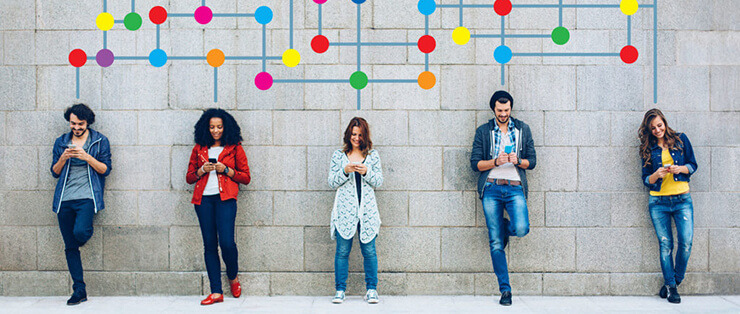
The behavior that Brazilians have in front of their smartphone screens reveals a lot about their consumption habits, preferences and behavior. That's why the Opinion Box (www.opinionbox.com), a company that offers innovative digital solutions for market research, and the Mobile Time portal (www.mobiletime.com.br) signed a partnership and, every six months, publish the results of the “Panorama Mobile Time/Opinion Box – Use of apps in Brazil”.
For the new edition of the survey, during the month of November 2016, 1,963 Brazilians who access the Internet and who have a smartphone were interviewed, respecting the proportions of gender, age group, monthly family income and geographic distribution of this group. The research has statistical validity, with a confidence level of 95% and a margin of error of 2.2 percentage points.
Training
According to the new survey carried out by Opinion Box, the proportion of Brazilian internet users with smartphones who declare that they subscribe to some entertainment service with monthly payment and whose use takes place mainly in mobile apps more than doubled between April and November this year, from 18.8% to 40.1%. According to research, the habit is more common among iPhone users (54%) than among those with Android devices (39%).
For Fernando Paiva, who coordinated the research with Opinion Box, the explanation for the growth of mobile entertainment may lie in the economic crisis. “The absolute leading service among those cited by this group is Netflix, signed by 58.9% of Brazilian internet users with smartphones who pay for a mobile entertainment service. As Netflix has a much lower price than traditional pay-TV services, it is possible that it is stealing share from them in these times of recession”, he evaluates.
races
Another item identified in the research was the appearance of Uber, for the first time, in the ranking of the 20 most found apps on the first screen of Brazilian internet users' smartphones. The car racing call app entered the ranking occupying seventh place: its icon is on the main screen of 9.3% smartphones of Brazilian internet users.
Felipe Schepers, COO of Opinion Box, attributes Uber's success in the last seven months in Brazil to the economic crisis experienced in the country. “The Uber X private car ride service offers lower prices than the regular taxi, attracting Brazilian consumers from all social classes who want to save money. At the same time, the crisis has led many people to try work as Uber drivers, either as part-time jobs or as a main role in the case of those who are unemployed. The increase in the fleet has improved the efficiency of the service, in addition to reducing the fare, as Uber calculates the price according to the proportion between supply and demand, the so-called “dynamic fare”. The dispute with taxi drivers and the controversies surrounding its regulation with several municipalities ensured a lot of journalistic coverage for the app, which also contributed to its popularity”, analyzes the executive.
Breaking down by age group and social class, it is clear that Uber is commonly found on the first screen of smartphones of older people and of classes A and B. It appears on the home screen of 16% on smartphones of people over 50 years – and in 8% of the devices of people between 16 and 29 years. In classes A and B, Uber is present on the first 11% screen of the devices, while in classes D and E, in only 5%.
App acquisition
The slowdown of application stores, a phenomenon that worries developers in markets such as the North American and Europe, has not yet reached Brazil. Here, 80.7% of Brazilian internet users with smartphones declare having downloaded at least one new app in the last 30 days, with 32% having downloaded it in the last 24 hours. Only 16.7% last downloaded between one and six months ago. And 2.6%, more than six months ago according to the Opinion Box survey.
“The problem in Brazil is different: low-end cell phones have little memory, which forces consumers to stick only to the apps they actually use the most, which leads to a low retention of installed apps”, analyzes Fernando Paiva.
The proportion of Brazilians who have already paid to download an app remains low: only 15%. On the other hand, almost half (47.8%) have already made purchases of virtual goods within apps. This percentage has been increasing gradually. In the first edition of the survey, carried out in April 2015, there were 39.5%.
Methodology
There are several ways to measure an app's popularity. In the Panorama Mobile Time/Opinion Box survey, the option was made to ask respondents to freely name up to 20 downloaded applications that can be found on their home screen. This is an objective way of measuring the popularity of an app, based on the assumption that people keep those titles they use most often on their first screen. Respondents need to write the names of the apps. Based on the answers, a ranking is created with the 20 most common apps on the home screen of Brazilians. When building the list, care is taken to check answers with spelling variations of popular apps, even when wrong.
WhatsApp, Facebook and Instagram occupy the top three positions in the ranking. It is worth mentioning the presence of Banco do Brasil as the best placed national app, in fifth position.












